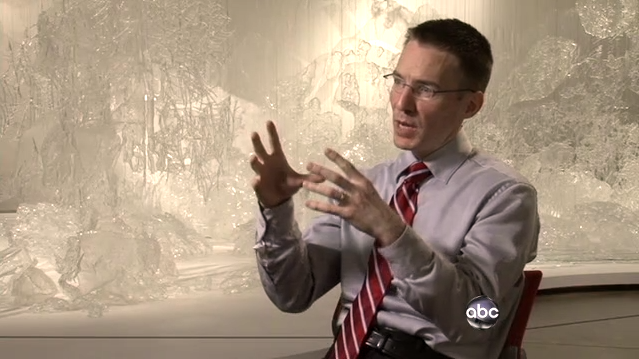Acquired Savant Syndrome: How A Bar Fight Gone Bad Turned One Man Into A Math Genius

A head injury from a bar fight transformed a college drop-out into a mathematical genius. Meet Jason Padgett. Doctors say Padgett, 31 at the time, developed acquired savant syndrome from the "profound concussion" he suffered during the attack. The syndrome causes the average person to suddenly become a prodigy in math, art, or music.
“I watch the cream stirred into the brew. The perfect spiral is an important shape to me. It’s a fractal. Suddenly, it’s not just my morning cup of joe, it’s geometry speaking to me," Padgett told the New York Post of his morning cup of coffee after pouring cream into it.
Since the head injury, Padgett says his world is filled with mathematical patterns that make up the whole. Even his dreams, he told the NY Post, are made up of geometry.
This change in his life happened after he was attacked by two men on Friday, Sept. 13, 2002 outside of a karaoke bar near his home. The two men punched him in the back of his head, rendering him unconscious. The next morning when he was using the hospital bathroom, he noticed “lines emanating out perpendicularly from the flow ... At first, I was startled, and worried for myself, but it was so beautiful that I just stood in my slippers and stared,” he told the NY Post.
Padgett now says that he can’t remember the time when he used to see the world like everyone else. He is now part of a small group of people in the world (50 approximately) with acquired savant syndrome.
A similar case happened in 2012 with Ric Owens, a self-described “accidental artist,” who began creating magnificent pieces of art following a car crash. “I never know what's going to come out," Owens told Philly.com. "I just let it happen.”
Padgett believes that something like this can happen to anyone; they just need to be woken up. “I believe I am living proof that these powers lie dormant in all of us,” Padgett writes in his memoir, Struck by Genius: How a Brain Injury Made Me a Mathematical Marvel.
“It was like a bomb went off in my mind. In a matter of minutes, I was no longer just a receiver of geometric imagery or a researcher; I was a theorist,” he wrote.



























